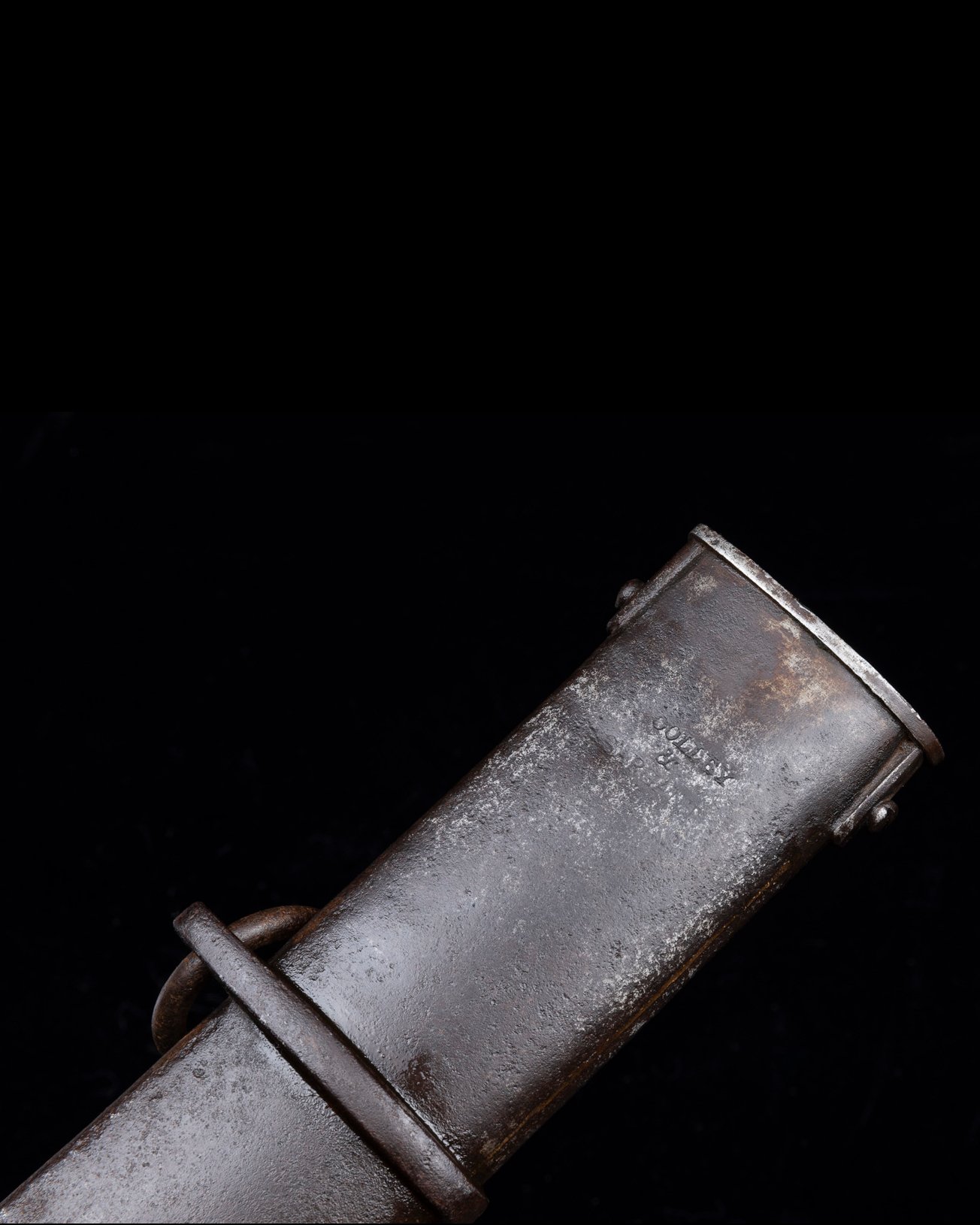1796 British Light Cavalry Trooper's Sabre
A good example of a 1796 British Light Cavalry Trooper's Sabre. Used by the British light cavalry during both the Peninsular and Napoleonic wars.
The large 33in curved blade is free from and pitting or patina. The scabbard and hilt have an even, patina with no movement or looseness. Both the spine and scabbard are marked Woolley & Sargant. The leather grip is intact, but has lost the grip wire. The blade is stamped with the crown Board of Ordnance inspection mark of a crown over 4. Despite its size its well balanced and light, weighing 779g.
Woolley & Sargant (1814/5-1816) formerly Woolley, Deakin & Dutton) produced their sabres especially for the looming 100 Days War in March and April 1815, after the Congress of Vienna declared Napoleon an outlaw after his escape from his first exile to the Elba
A good example of a 1796 British Light Cavalry Trooper's Sabre. Used by the British light cavalry during both the Peninsular and Napoleonic wars.
The large 33in curved blade is free from and pitting or patina. The scabbard and hilt have an even, patina with no movement or looseness. Both the spine and scabbard are marked Woolley & Sargant. The leather grip is intact, but has lost the grip wire. The blade is stamped with the crown Board of Ordnance inspection mark of a crown over 4. Despite its size its well balanced and light, weighing 779g.
Woolley & Sargant (1814/5-1816) formerly Woolley, Deakin & Dutton) produced their sabres especially for the looming 100 Days War in March and April 1815, after the Congress of Vienna declared Napoleon an outlaw after his escape from his first exile to the Elba
A good example of a 1796 British Light Cavalry Trooper's Sabre. Used by the British light cavalry during both the Peninsular and Napoleonic wars.
The large 33in curved blade is free from and pitting or patina. The scabbard and hilt have an even, patina with no movement or looseness. Both the spine and scabbard are marked Woolley & Sargant. The leather grip is intact, but has lost the grip wire. The blade is stamped with the crown Board of Ordnance inspection mark of a crown over 4. Despite its size its well balanced and light, weighing 779g.
Woolley & Sargant (1814/5-1816) formerly Woolley, Deakin & Dutton) produced their sabres especially for the looming 100 Days War in March and April 1815, after the Congress of Vienna declared Napoleon an outlaw after his escape from his first exile to the Elba









